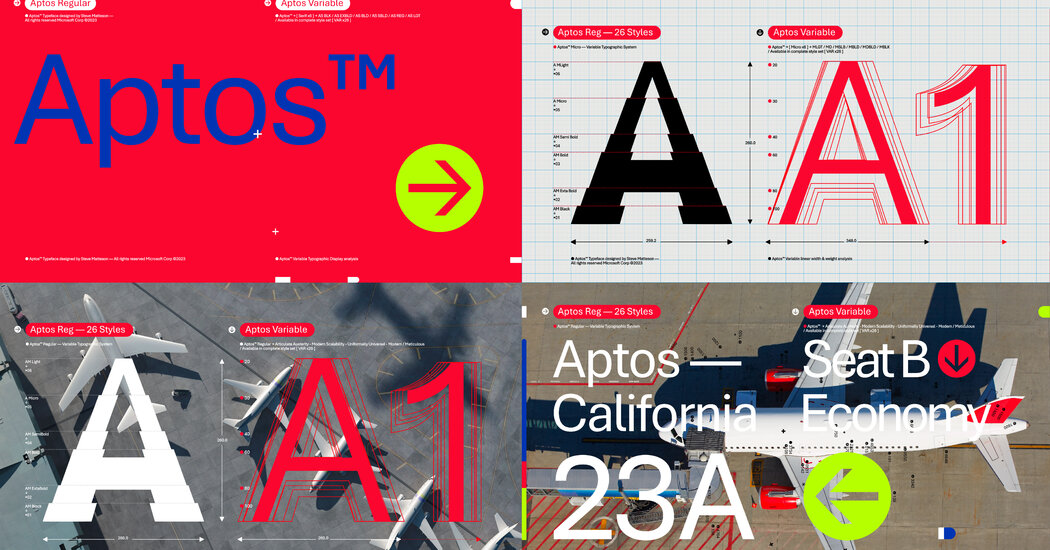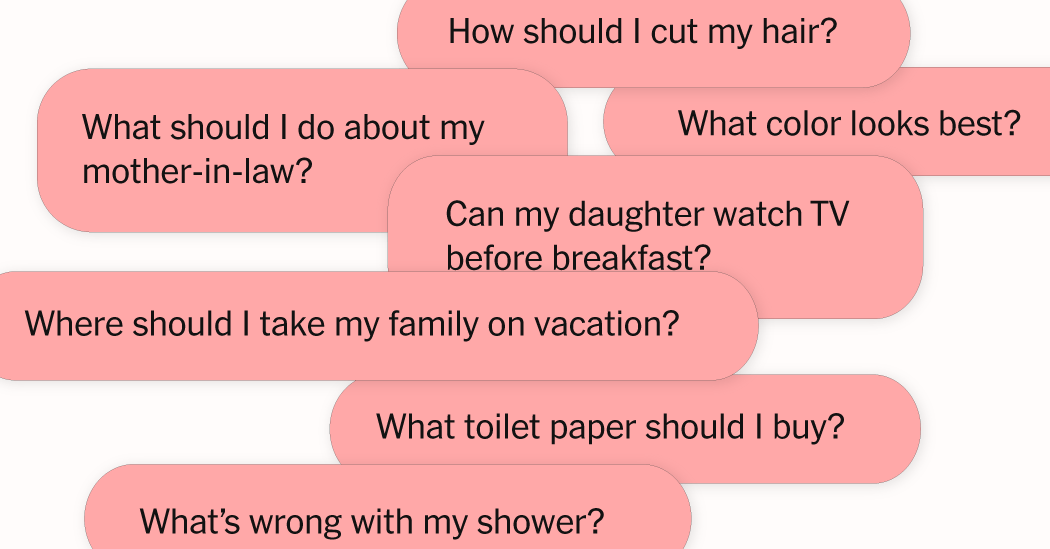When you read — a book, a traffic sign, a billboard, this article — how much do you really notice the letters? If you’re like most people, the answer is probably not at all.
But even if you don’t really notice them, you might sense it if something has subtly changed. That’s a feeling some people have had in recent weeks when they turn on their Microsoft Word programs.
After 17 years of Calibri as Word’s default typeface, many users suddenly found themselves typing in a new typeface called Aptos. The change is also affecting the look of PowerPoint, Outlook and Excel.
Letters are letters, but for designers and typography fans, they matter a lot.
Why the change?
“We wanted to bring something new and fresh that really was designed natively for the sort of modern era of computing,” said Jon Friedman, the company’s corporate vice president for design and research, who led the effort.
(Technically Aptos and Calibri are typefaces, while a “font” refers to a particular face or size, like italics or boldface. But in practice, “font” is often used as a synonym for “typeface,” including by Microsoft employees interviewed for this article.)
The big divide in the world of typeface is between serif, or letters with small lines or tails attached to their edges, and sans serif, letters without those lines that have a smoother look.
Like Calibri, Aptos is a sans serif typeface but with something a little extra, Microsoft says.
Centuries ago, in the early days of printing presses, almost all typefaces had serifs. “Sans serif was meant for billboards,” Mr. Friedman said. “They were big, blocky letters, and they called them ‘grotesque.’ They were bold and easily legible from far.” At the time, a sans serif was rarely used for more than one or two words or a single sentence.
Aptos would be classified as a “neo-grotesque” font.
“Neo-grotesque was when the artistry started,” Mr. Friedman said, referring to an era in the mid-20th century. “Designers started to choose sans serif fonts. That was the birth of Helvetica and Arial that were used more broadly and were sans serif fonts.”
It helped that most people thought sans serifs looked better on a computer, which was rapidly becoming the writing instrument of choice worldwide.
As for Aptos, “we wanted it to be a little more quirky and whimsical” even though it was a sans serif, Mr. Friedman said. “Sans serif fonts are pretty rectilinear, clear, easy for reading, but sometimes they miss some of the whimsy that serif fonts might have.”
The designer, Steve Matteson, “brought a little more — he called it ‘imperfections’: little bits of change that are slightly different from a typical sans serif font,” Mr. Friedman added.
“You know, you’ve got to try to sneak in a little bit of humanity,” Mr. Matteson said in a Microsoft statement about the change. “I did that by adding a little swing to the R and the double stacked g.”
In most sans serif fonts, “the capital ‘I’ is a line, and the lowercase ‘l’ is a line,” Mr. Friedman said. “The weight is slightly different, but most people can’t see it. In Aptos, the lowercase ‘l’ has a tiny curve at the bottom. Illinois. Illustration. It’s very clear what you’re reading, even in a sans serif.”
“It’s both quirky and creates a more natural feel that brings in some of the serif font ‘je ne sais quoi’ to it,” he added.
In another subtlety, above the lowercase i’s and j’s are circular dots as opposed to squares as in Calibri. You may notice this when you type “je ne sais quoi” in Aptos.
So how exactly do you design a font? The answer is one that creative types everywhere might appreciate: “You’ve got to start somewhere,” Mr. Friedman said.
“One font designer might start by roughly sketching out the entirety of the alphabet,” he said. “Others might start with a particular letter that they think is challenging.”
“You think a font is such a tiny thing,” he added. “It’s just letters. But it requires deep thinking; it’s not a trivial concept.”
The end result, Aptos, is Microsoft’s trademarked intellectual property.
“Even though some people can see the difference and passionately care about it, and others may seem like they don’t care about it, the moment we change it, people notice something changed,” Mr. Friedman said.
Some of those people came forward on social media with a litany of complaints. (Others said they liked the new font.)
Change to a familiar product often brings protest. When The New York Times added color to its print front page in 1997, some people complained that the staid paper had become unnecessarily flashy, though such gripes faded quickly as readers grew used to the change.
As for those who never learn to appreciate the neo-grotesque, there is a solution. Remember what “default” means.
If you’re using a Windows device, navigate to Home and open the Font Dialog Box Launcher. On a Mac, go to Format and click Font. Change the font to one you like better. Set it to Default. Aptos will no longer darken your door.
The New York Times is keeping its color, though.







